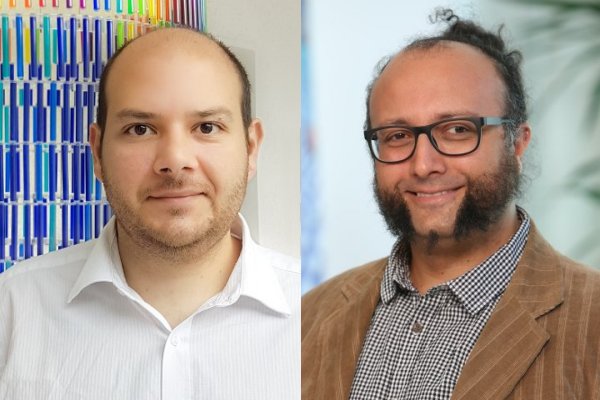
We run a EUROPRACTICE webinar series focused on the Advanced Integration and Packaging services provided by EUROPRACTICE. Usually on average we have around 100 attendees, with 90% attending the full session including the Q&A. EUROPRACTICE customers are the core audience, plus additional attendees from Tyndall and some wider audience base coming through from LinkedIn and other avenues such as YouTube.
We have a co-host style; the Ramsey and Francesco double act from Tyndall, with a key speaker and panellists where appropriate. The key speaker can be an invited speaker, internal or external. Talk is limited to 15 mins max, with another 15 mins of Q&A.

Dr. Ramsey Selim, Photonics Programme Manager, Tyndall.
On building content and audience:
Our free webinars are also available as a series on YouTube. There have been several emails from people that have tuned in, saying they really engaged with the content and the webinar. It is usually a good sign, when someone attends one webinar and asks how they can watch the full series (any episodes they’ve missed!) which are incidentally, all hosted on our YouTube Channel straight after the webinar. Our first webinar had over 400 views on YouTube within the first 24 hours.
We are fortunate that we have been able to use the EUROPRACTICE mailing list of over 4000 members for promotion, but we also heavily use LinkedIn: the EUROPRACTICE page, the Tyndall page and our personal pages.
The key feedback is the repeat attendees, the audience is tuning in regularly, so they are obviously happy, or at least entertained! But really, we’d like to believe that they are coming back for the technical content.
On lessons learned:
Technically, Episode 1 aired on the 12th of December 2019, and then we had a break of a few months while we learned the lessons from that first launch.
One of the first things we learned is that sound quality and background noise are essential to control. So using meetings rooms is high risk, as you can’t control surrounding noise like people speaking outside, or onsite builders carrying out maintenance work.
We also learned that there is a lot of preparation involved to make a webinar successful, especially a webinar series. So for example, setting up the platform, setting up the recording or live environment, figuring out where and how to market, are all things we had to think about.
Episode 2 was then aired 7th April 2020, and all subsequent episodes have been aired fortnightly.
On moving to a WFH (Webinars From Home) working style:
Our first webinar in December 2019 needed a month of advance notice for attendees, while in this new ear of COVID19 madness, 3-day notice is enough. Anything more than that and it gets lost in the noise of Zoom and Team Meetings.
There is an overload of webinars and online sessions at the moment, so keeping the session short, not rushing it, but having relevant bite-size content for about 15 mins works well. That gives time for the audience to be introduced to the topic, learn something new, then have an open Q&A session where they can ask questions about what they’ve just learnt.
On webinar technology:
We had some technical problems with episode one, so we had lots of ideas coming in from people suggesting how we could do things better, like the best webinar platform to use and the balance of using pre-recorded material vs all live material. We’ve taken a lot of that feedback on board, like changing the webinar platform to one that is fit for purpose.
We now use Zoom with the Q&A platform for our webinars. The licences we have is for up to 500 live attendees, so at this stage we have enough capacity to grow. For equipment, we currently use Surface Pro laptops provided by Tyndall.
Ramsey and Francesco’s Top Tips for creators:
In terms of content, in addition to planning and preparing notes for each episode, we learned early on that rehearsals are vital - that’s when you pick up on all the silly mistakes.
Also, we provide certificates of attendance to attendees that need it. This is particularly popular with Italian Universities, where attending such webinars can go towards their university course credits. This has brought in many Italian PhD students.
Catch up with the series on YouTube.
